
imaginima
A soaring U.S. dollar, a deepening energy crisis in Europe, instability in Japan, and a host of other factors continue to weigh on foreign stocks. While emerging markets caught a small bid last week, thanks to sudden strength in China, foreign developed markets just kept dragging their feet. Once again, though, as the U.S. stock market fell, ex-U.S. shares turned into a low-beta play.
Friday morning’s Jackson Hole speech by Jay Powell turned investors’ attention back toward uneasiness around inflation and economic growth within the U.S. borders, perhaps allowing foreign stocks to outperform.
Last Week’s ETF Performance Heat Map: VEA Down Less Than Domestic Stocks
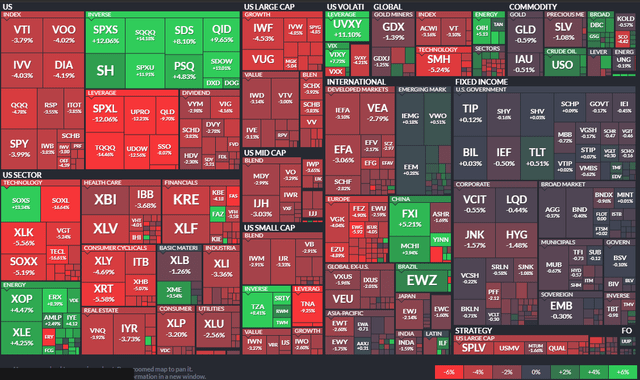
Finviz
The Vanguard FTSE Developed Markets Index ETF (NYSEARCA:VEA) is a popular (or notorious, given poor performance of its index) way to get low-cost exposure to the world of stocks outside of the States and emerging markets. Access to small-, mid-, and large-cap equities in the major markets of Europe, the Pacific Rim, and Canada is offered through the fund, according to Vanguard. The group has been in a relative downtrend to the Vanguard Total Stock Market Index ETF (VTI) for nearly a decade-and-a-half.
Foreign Developed Equities vs. US Stocks: Prolonged Bear Market
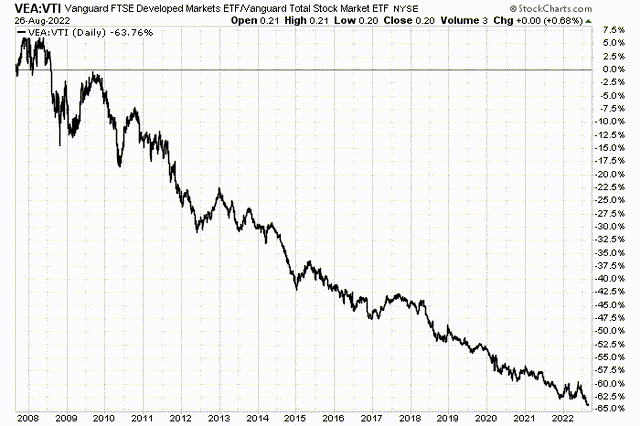
Stockcharts.com
Early last week, traders were glued to what was happening with European natural gas prices as the Dutch TTF contract, along with German and French year-ahead power prices, soared. There are signs that this coming winter could be brutal from not just a financial perspective, but also considering that businesses and families might have heat shut off when it’s needed most. The situation brings back some memories of the 2011-12 European debt debacle in terms of how widespread the crisis could be.
Along with a deteriorating Japanese Yen, what’s going on across the pond no doubt pressures VEA. Unlike the S&P 500, ex-U.S. developed markets broke down through the early 2020 peak. The ETF managed to find support near $39 – the market low right around the 2020 U.S. elections and immediately before the Covid vaccine announcements caused the bulls to take charge
VEA now finds itself in a downtrend that began more than a year ago. Recall that emerging markets peaked in early 2021, around when meme stocks hit their crescendo, then came foreign developed markets a few months later. The timeline of tops continued with many large-cap tech stocks and U.S. small-cap equities in November, before the last man standing was the S&P 500 this past January. Amid what is becoming a protracted bear market in VEA, bulls hope $45 is broken to the upside for a new uptrend to begin. If $39 is breached, then the $35 to $37 range is in play.
Technical Analysis: VEA Falls Back From Resistance
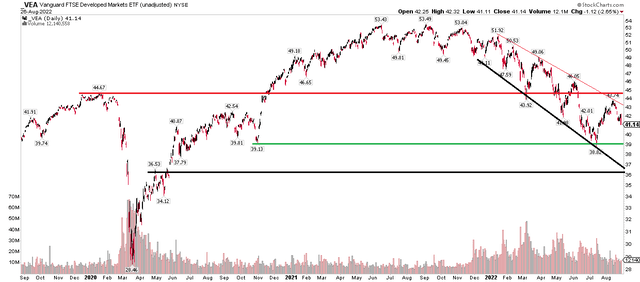
Stockcharts.com
What is encouraging, though, is that VEA pays a historically high 3.5% dividend yield and sports a cheap 11.6 price-to-earnings ratio, according to Morningstar.
VEA Portfolio Metrics: Low P/E, High Yield
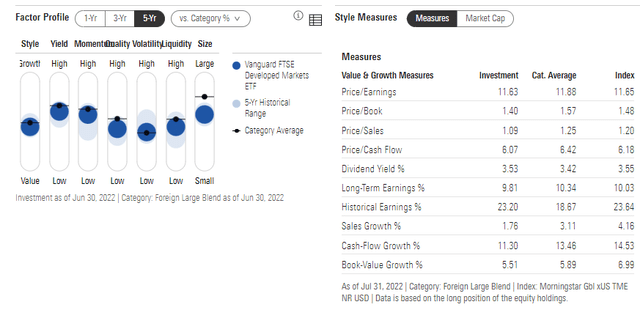
Morningstar
Foreign Markets Are Cheap Vs. The USA
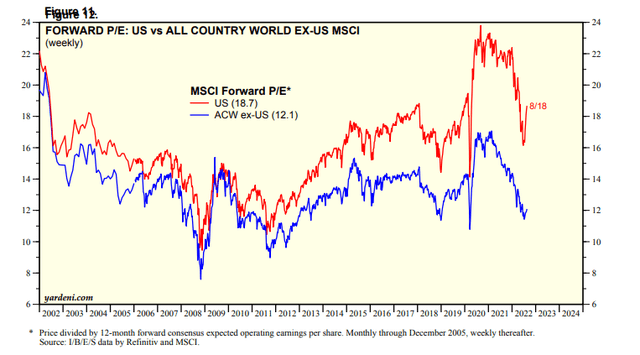
Yardeni Research
The Bottom Line
Look for some continued near-term weakness in VEA until it climbs above $45. The ETF could have a date with new lows around $36 if we indeed see the usual September and early October volatility ahead of more bullish seasonal trends to cap off 2022.


Be the first to comment